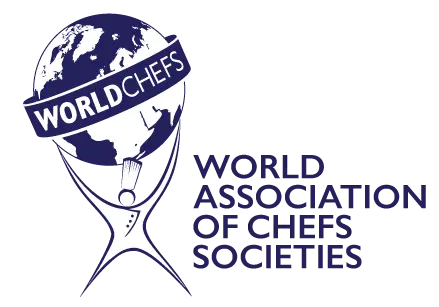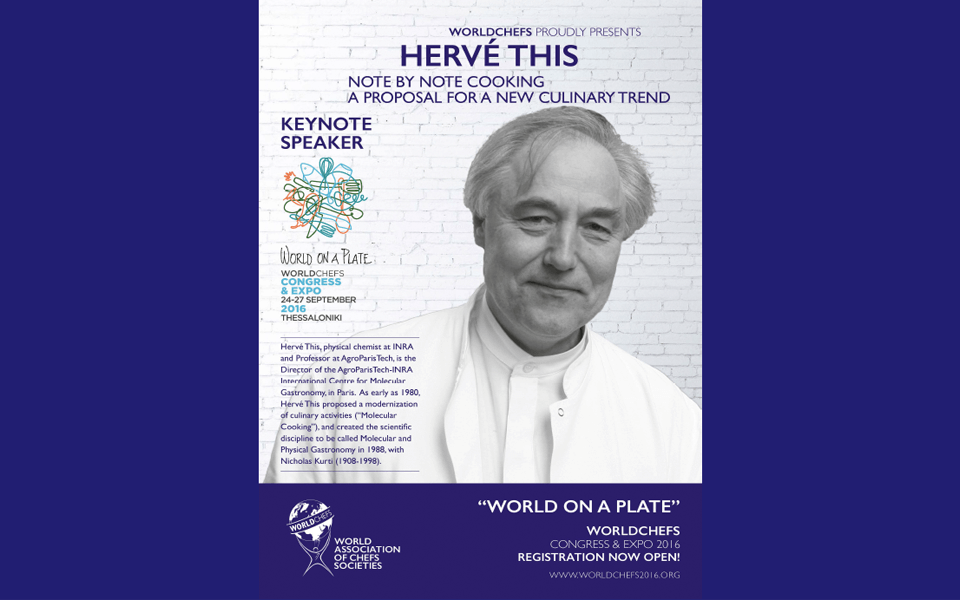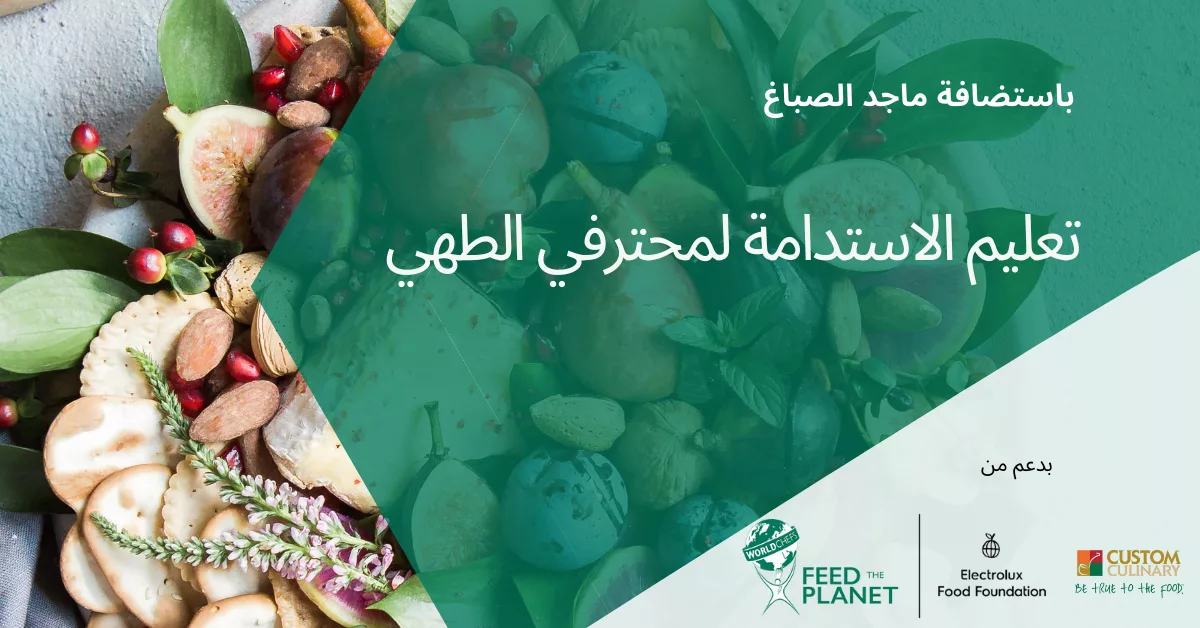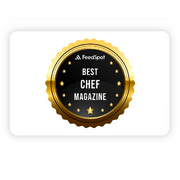Worldchefs Congress & Expo 2016 has notable speakers ready to impart their knowledge to visiting chefs but Hervé THIS is the most mind blowing of all.
A physical chemist at INRA in France he is the founder of molecular gastronomy. So save the date for Hervé and book now: http://bit.ly/1Ey2f50
Herve This – Test-Tube Chef
It was dinnertime and Hervé This was building us a steak. Explaining that a nice sirloin is 40 percent water and 60 percent protein, the French chemistry professor dumped four tablespoons of water into six tablespoons of powdered egg. (As it happens, he was wrong: the proportions are closer to 70 percent water, 20 percent protein, and 10 percent fat.) In went a pinch of allyl isothiocyanate, for a mustardy kick.
“What about having the potato in the steak, instead of french fries on the side?,” This (pronounced Tees) asked the standing-room-only crowd of pastry chefs, professors, and fermenters who had packed an NYU lecture hall last October to hear him speak. He used a microwave propped on a table as a lectern, and moved aside his other ingredients—the dehydrated egg, along with vegetable oil, salt, and sugar—to rummage through a case of clear glass vials stoppered with black lids. He unscrewed a small bottle of methional oil, which has a cheesy-potato flavor, and the room’s freshcarpet smell gave way to baked potato mixed with high-school gym. “So here is some potato,” he said, pouring the methional into his dough. “How many potatoes do you need?” At a time when much of the culinary world believes in farming like pioneer settlers and looking its meat in the eyes, This wants us to abandon peas and carrots (“Middle Ages!”) for their constituent parts—glucose, sucrose, cellulose, amino acids, and more. He showed his audience a picture of wooden shelves stocked with rows of identical white containers and a scale. “This is the kitchen of the future,” he declared. “Beautiful boxes—some contain liquids, some contain powder.”
A celebrity academic who advises Michelin-star chefs and government officials, This is a kitchen revolutionary who seems to dash off cooking manifestos at the rate at which other people tweet and who issues the unqualified declarations of a prophet. He is regarded as the founding father of molecular gastronomy, having spent his career pushing science into the kitchen—first to e plain traditional cooking, then to dismantle it. He has sent sliced onions through an MRI machine and invented an equation for aioli. He has mummified eggs, unboiled eggs, cooked eggs without heat, and turned hard-boiled eggs transparent.
Now This has staked his reputation on a new way of feeding ourselves that he calls “note-by-note cooking.” It involves designing food from pure chemical compounds and is, he argues, an “obvious” approach that will help stave off the energy crisis, eliminate food waste, and end world hunger. Far from protein shakes concocted with chemistry-class staples, the meals This envisions will be made with the same care as mille-feuille or coq au vin, but they will be composed of, say, citric acid, ethanol, and glycerol. Note-by-note recipes call on kitchen essentials like water, oil, and sodium chloride (a k a salt) and use classic techniques like frying, broiling, and baking along with molecular-gastronomy methods like dehydration and spherification. Many of the finished dishes resemble creations from El Bullí, the now-closed Catalonian restaurant that put modernist cuisine on the world map, with powders and foams arranged beside brightly colored rectangles of food that could be crunchy or creamy, depending on how they were prepared. Bulk might come from powdered wheat starch instead of pasta; a sauce could be thickened with iota carrageenan, a seaweed e tract, in place of heavy cream; liquids are chiefly water and cooking oil; and plates may be dolled up by running combs over whisked piles of pea-protein dough. In time, This says, “the comb will be the ultimate culinary tool.”
This had traveled to New York to promote Note by Note Cooking, his 23rd book, and was also pitching the annual note-by-note cooking contest, held in Paris. In the NYU classroom, This had people sufficiently rattled that they began interrupting him. The head of a company that makes cricket-flour protein bars raised his hand. He was concerned, he began, that no one knows enough about macro- and micronutrients to use the note-by-note method to re-create—
“Not re-create. Create!,” This interjected. The white sludge of egg protein he was mixing was not really a steak, he explained with practiced patience. He does not want to simulate steak—or chicken, or salmon, or pears. He wants to invent new foods that offer new flavors. Calling the mixture “steak” had been a bit of theater to make the abstract concept of note-by-note more familiar. To eliminate confusion, however, he would give the dish a different name: Dirac, in honor of the British theoretical physicist Paul Dirac (This likes naming dishes and sauces after scientists). “If you have beef and carrot” to work with and nothing more, “you make one mixture,” This said. “But if you have the 300 compounds in beef and the 500 in carrots, then the number of combinations is much better and all the possibilities exist! I can make anything! It’s the same as electronic music.”
HIS, WHO IS 60, has diaphanous white hair and the long, soft shape of an éclair. He delivers blunt judgments. “By the way, applied sciences don’t e ist, but that’s another story,” he announced after a woman introduced herself as working in the applied sciences. Or: “I have to tell you, note-by-note is already done in many countries, but not in America. And this is sad for you. You are late.” As This lectured, he threw his left fist into his right biceps for the “up yours” bras d’honneur more often than he paused for water, and answered many questions with an exasperated “But I don’t care!”
As the Dirac cooked in the microwave, This outlined his plan for farmers to buy extraction kits—about $5,000 apiece—so they can sell polyphenols instead of produce. These edible powders last forever, This said: farewell, food spoilage. Shipping the pure compounds takes less money and fuel than transporting the sacks of sugar, protein, ash, and water we call tomatoes. Or, he added, homeowners could just save their grass clippings when they mow their lawns. “You could extract the sugar and amino acids and keep them in a box and sell them,” This said. “Or eat them!”
This is already feeding himself note by note. On days when he can’t leave his lab for lunch, he’ll dip into a large sack of powdered plant protein to whip up some of the Dirac that people were just then passing around the lecture hall. His favorite faux wine sauce is a mixture of dissolved grape phenolics, tartaric acid, and water. (From the recipe: “If you like, add a little diacetyl in solution to some oil, then add a drop of 1-octen-3-ol in solution (20 parts per million) to some oil.”)
The Dirac eventually reached my seat. The mass of lumpy white proteins clung to a fork with the consistency of scrambled eggs mi ed with Elmer’s glue. Before I could chew it, the Dirac melted on my tongue, releasing potato and mushroom flavors and a vague aftertaste of Roquefort, but nothing close to sirloin. It felt in the mouth like a sticky Cheez Doodle robbed of its flavoring powder. Considering how snack foods are assembled, Dirac is in many ways the second cousin of the Doodle. The Coca-Cola, Twinkies, and Starbursts being sold at the deli across from NYU’s campus are early iterations of note-by-note, assembled, as so many packaged foods are, from chemical compounds that could have come from This’s food pantry of the future. They fall short of what This calls “pure note-by-note”—foods made only of compounds that have been fractionated as far as possible—but he acknowledges a likeness.
The Dirac on my plate was a far cry from the note-by-note meals This envisions, which he says should tantalize the tongue. The winners of the 2014 contest, a 21-year-old Belgian medical student named Frédéric Clarembeau and his partner, Elodie Ricquebourg, came closer to this vision with the dish they created, Palette de saveurs aux notes d’Asie. Their creation looks from the photograph posted online as though it could have a place on any Manhattan tasting menu: a soup garnished with cream and saffron threads, accompanied by a meticulous arrangement of grilled bread, fried chicken, and Parmesan crisps. When I spoke with Clarembeau, he e plained that the “soup” was freeze-dried coconut e tract and gellan gum (a bacteria by-product) presented in two contrasting consistencies: in a hot liquid form, and as a cold whipped cream that wouldn’t melt. He had prepared a red garnish by squeezing a jelled soy-sauce mi ture from a syringe onto an ice cube, and the “chicken” was really wheat starch, gluten, milk protein, glutamate, and centrifuged carrot fibers pulverized in a coffee grinder and then pan-fried.
A caramelized sauce flavored with limonene and geraniol—aromatic chemicals used more often in cosmetics than in cooking—topped off the creation. Clarembeau and Ricquebourg’s recipe was judged on feasibility, originality, and flavor complexity, though Clarembeau admitted to me that their dish “wasn’t mind-blowing, but it tasted good.”
Some in the NYU crowd worried that note-by-note would gut the emotional and cultural role of food. A valid concern, and yet it seemed that the audience had overlooked the cooking that is integral to This’s plan. The ingredients may be unconventional, but working them into appetizing meals still requires a chef’s creativity, not to mention the usual stirring and sautéing. “If cooking were only a matter of technique it would be a very sad thing indeed,” This writes in his book. “Cooking is able to transcend mere doing by virtue of the fact that it also has an artistic aspect.”
Even if his plan to save the world falls short, note-by-note could—and aims to—give rise to a new kind of culinary experience that moves past the constraints of nature’s grocery store. DJs fill clubs by playing synthetic beats that sound nothing like any music made with traditional instruments. So why can’t chefs break loose, too?
The NYU foodies were not entirely sold. “I don’t think there’s anyone who left the room who was like, ‘Wow! I can’t wait to have a note-by-note dinner,’ ” Anne McBride, the adjunct faculty member who’d invited This to speak, told me later.
When people call note-by-note disgusting or a threat to the future of food, This hears only the same objections he received in the 1980s when he preached the gospel of now-standard restaurant techniques and ingredients like sous-vide cooking and hydrocolloids. As with molecular gastronomy, This has started by implanting note-by-note in haute kitchens, hoping the 99 percent will follow. Already, Pierre Gagnaire, a three-Michelin-star chef and This’s longtime collaborator, has served note-by-note-style dishes in his restaurants. One Gagnaire dessert, the Chick Corea, uses ascorbic acid, beta-carotene, calcium lactate, centrifuged apple, and other ingredients to create lemon-flavored liquidfilled pearls and cubes of fruit fiber that are served under a brittle green menthol crust. Le Cordon Bleu has hosted dinners to teach This’s principles to its up-and-coming gastronomes. And, a few days before visiting NYU, This had pitched Jean-Georges Vongerichten on the idea of a note-by-note café.
“If you give this new food to the king, everybody will want it,” This said at NYU, adding that he doesn’t care about foodies. It’s the meat-andpotatoes folks he’s after. Or, as he hopes they will be called, the Dirac people.













